Order between December 16, 2019 and January 20, 2020

SOUTH AFRICA, PAUL SAPIN
SOUTHERN HEMISPHERE, ALSACE, THE RHÔNE, CHAMPAGNE & SPIRITS









Order between December 16, 2019 and January 20, 2020

SOUTH AFRICA, PAUL SAPIN
SOUTHERN HEMISPHERE, ALSACE, THE RHÔNE, CHAMPAGNE & SPIRITS








Let yourself be inspired by our detailed descriptions to find out which wines best suit your palate. Our custom chart on the left also features a variety of user-friendly symbols that can guide your selection.
M—Degree of Maturity (1-10)
M1 = lay down
M10 = fully mature
Grape variety Red - White - RoséSparkling - Port
Bottle size
Number of bottles in case
Aroma
Taste
Serving temperature
Ideal with
Evolution
Drink this year
Will develop, drink within 2 years Meant for cellaring
Concentration
Light - Medium - Great
Oak Light - Medium - Heavy
Organic
Vegan/vegetarian
Limited quantities Limited
Very limited
Extremely limited Less than 100 cases available
Members’ Choice 2019 favourite
Opimian Suggests Starting a cellar
Medal Winner
Discovery
2019 Discovery Program
Case - C263
Select Plus 2019 Select Plus Program Case - C263
D—Degree of Drinkability (1-10)
D1 = needs time D10 = ready to drink
Still unsure what to order? Opimian’s Member Service team is always available to help you make an informed choice. Call us at 1-800-361-9421 or e-mail MemberService@Opimian.ca
Last day to order for this Cellar Offering is Monday, January 20, 2020 at 9 a.m. EST No orders will be processed after this time. There are four ways to order:
• Online: Go to Opimian.ca, sign in and select Order Wine
• Email MemberService@Opimian.ca with your selection.
• Call 1-800-361-9421, Monday-Friday, 9am - 5pm ET.
• Mail your order by January 10, 2020. Please allow 10 days for delivery by Canada Post.
The wines featured on this Cellar Offering are still at the producers’ wineries when you order them, so it is normal that the process takes a bit of time and effort on our side.
Release dates are dependent upon actual arrival dates, distance from port of entry to liquor board and processing time required by each liquor board. For this Cellar Offering, the expected release date is June 2020
Once the wine arrives at your local liquor store or distribution centre, you will receive a Pick-up Notice with the specified date (the Release Date) and your pick-up location.
Conditions
• Accepted payment methods: Credit Card (Visa, MasterCard, American Express) or cheque payable to Opimian.
• Prices include all applicable federal and provincial markups and taxes.
• A valid membership card is required to order.
• Bottle prices are for reference only. All orders are by the case, with no minimum required.
Notes (as required by the SAQ’s operating procedures)
• A member ordering from this Cellar Offering requests that Opimian acts as the member’s agent in ordering the wines from the Société des Alcools du Québec (SAQ) and requests that Opimian remits the funds enclosed (minus any administration fees) to the SAQ to pay for the wines ordered.
• The prices as shown are the estimated costs to be charged by the SAQ plus an administration fee and consolidation charges.
Sweetness scale Grams/litre Examples
[00] 0 - 3 Chardonnay, Sauvignon Blanc, many reds
[01] 4 - 6 Some New World varietals, some reds
[02] 7 - 12 Champagne, Sparkling, Rosés, few reds
[03] 13 - 20 Mosel, some Alsace, Anjou
[04] 21 - 34 Semi-sweet Bordeaux, some sherry
[05] 35 - 50 Kabinett German, Late Harvest, Alsace
[06] 51 - 74 Spätlese German, Sweet Loire, Port, Dessert Muscat
[07] 75 - 100 Auslese, Beerenauslese
[08] 101 - 139 Icewines, Sauternes, Barsac, dessert wines, Port
[09] 140 - 179 Icewines, Sauternes, Barsac, dessert wines, Port
[10] 180 > Speciality sweet wines, Trockenbeerenauslese
South Africa, Paul Sapin Southern Hemisphere, Alsace, the Rhône, Champagne & Spirits
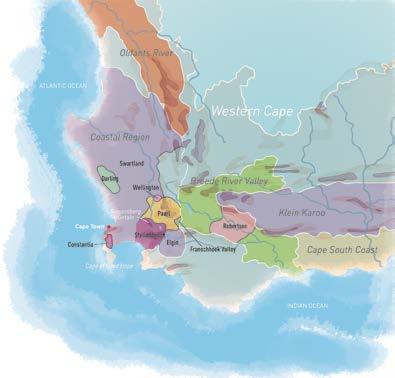
South Africa’s Cape Winelands is one of the most beautiful wine regions in the world. The scenery is dramatic; dotted with steep mountain ranges, bright sunshine and blue skies. These same mountains influence the wines made from vineyards planted on slopes, at varying altitudes and expositions on some of the oldest soils in the world. Decades of apartheid and trade embargoes influence life today as South Africans address injustices of the past. On my trip last year, I witnessed first-hand the good that businesses with a can-do attitude can achieve in providing jobs, education and land ownership. I met some truly inspirational leaders of change, and of course tasted some superb wines.
This is the largest Cellar Offering of the season, also featuring Rhône and Alsace wines from the super 2018 vintage, Paul Sapin’s Southern Hemisphere wines, Champagnes from Doyard-Mahé and a selection of fine whiskies and brandies.
Every wine offered by Opimian is tasted and selected for its deliciousness and value by our consultant Master of Wine, Jane Masters. Jane also chooses the mixed cases for Opimian’s Discovery and Select Plus subscription programs for members to discover wines in an easy and enjoyable way, as well as wines for the premium Founders’ Choice program. Jane has an in-depth knowledge of the world of wine. Her aim is to share her experience and love of wine with members in an easy and informal manner. She is one of 390 Masters of Wine worldwide and was elected Chairman of the Institute of Masters of Wine 2016-2018 by her peers.
Hunawihr’s

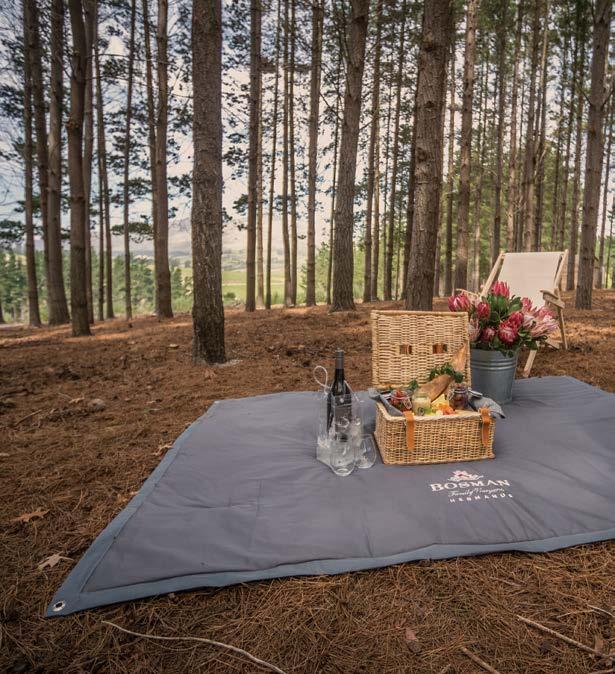
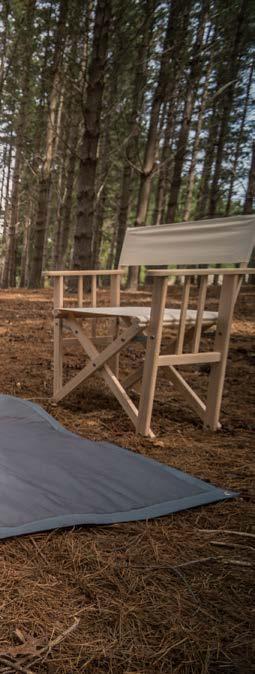
Visiting Bosman Family Vineyards last year was a revelation and an inspiration! As a country, South Africa has had and continues to experience inequalities, which it is addressing through land reform and Black Economic Empowerment projects. The Bosman family, who arrived on the farm at Lelienfontein in 1798, take their responsibility in this extremely seriously. There is no other company that could have embraced change more.
The Adama Apollo Trust was created in 2008 from the desire to create a better quality of life for all who live and work on the estate. Under the CEO Petrus Bosman, they have been responsible for the largest transfer of land ownership in the wine industry: 700 hectares. I visited the nursery and elementary school, which look after over 200 children, with a further 45 in high school. The trust provides computers and internet access for school projects. The trust also provides full time medical care, organizes transport for workers and a whole host of cultural, sports and community activities.
Bosman Family Vineyards farm vineyards in Wellington and Hermanus with wines made by Corlea Fourie. As well as producing wine, Bosman Adama is the largest vine nursery in Africa. As such, it has been important in improving vine health in South Africa and eliminating viruses in the vineyard, which in turn has driven wine quality in the Cape up.
1600

GENERATION 8 MERLOT, WO WELLINGTON, 2019
Merlot
$ 24.00 $ 144.00
A supple and juicy Merlot, aromas of forest fruits are complemented with some leafy notes. Medium bodied and supple on the palate, it has a savoury finish. Merlot grapes were chilled, destemmed and hand sorted prior to fermentation and some short oak contact.
2020-2022, M8 D9
Green leaf, forest fruits 16°C
1601
GENERATION 8 CABERNET SAUVIGNON, WO WELLINGTON, 2019
Cabernet Sauvignon
$ 24.00 $ 144.00

Petrus Bosman says that his family “has an affinity to Cabernet Sauvignon”. His grandfather believed that a small proportion of Cabernet in a red wine would take it up a level. The farm in Bovlei Wellington is well-suited to Cabernet Sauvignon, with well drained soils and a myriad of slopes giving variations in terroir which enhance complexity. The 2019 Generation 8 Cabernet Sauvignon is light to medium bodied with herbal flavours of dried leaves and cut grass combined with redcurrants. It is supple, yet less fleshy than the Merlot.
2020-2022, M8 D9
Dried leaves, cut grass 18°C
Redcurrants
Beef stewed in Cabernet Sauvignon
1602
GENERATION 8 SHIRAZ, WO WELLINGTON, 2019
Shiraz
$ 24.00 $ 144.00

Mellow fruits, mulberries and cherries lead to a supple palate.
Generation 8 Shiraz 2019 is a medium bodied wine with nice acidity and a red fruit finish. Grapes were sorted, destemmed, lightly crushed and fermented at low temperature.
Espetada (Portuguese beef skewers) with thick slices of artisan bread



The Optenhorst Chenin Blanc vineyard, one of the oldest Chenin Blanc vineyards in the country, was planted in 1952. For many years the plot had produced very little fruit and so the grapes picked from it were mixed in with grapes from other plots. The plan was to uproot it. Then in 2006, winemaker Corlea Fourie decided to see what it would produce if the grapes were kept and vinified apart. When the wine was tasted from barrel three months later, the team were speechless — it was so good. Needless to say, since then the plot has been maintained and the wine made each year. The 2017 is bright yellow in colour with aromas of honeysuckle, quince and some savoury spice. On the palate it is soft and rich with a smooth weightiness to it. Flavours of honey and spice give the wine great depth and a lingering finish. The old gnarled bush vines are perched at the top of a hill. Grapes were picked, whole-bunch pressed, and a spontaneous fermentation allowed to occur with limited use of old oak barrels.
Discover how the Bosman family is making a difference in Vino Etcetera’s Master Piece.
Honeyed, spices, [00]

Cinsaut was previously one of the cornerstone grape varieties planted in the Bovlei Valley but subsequently fell out of fashion when the world started looking for rich, heavily oaked New World styles. The 2018 is a translucent ruby colour with red fruit aromas. The palate is soft and light with red fruit and bitter cherries complemented by a grippy savoury chocolate finish. Relatively light in structure, it has lots of flavour and personality. Bosman planted this vineyard in 2003 on Twyfeling, a Cinsaut heritage site which had previously been planted to the variety in 1964. An early harvest between February 26th and 28th, 2018 yielded small concentrated grapes. It was matured in a combination of second and third fill French oak barrels for 17 months.
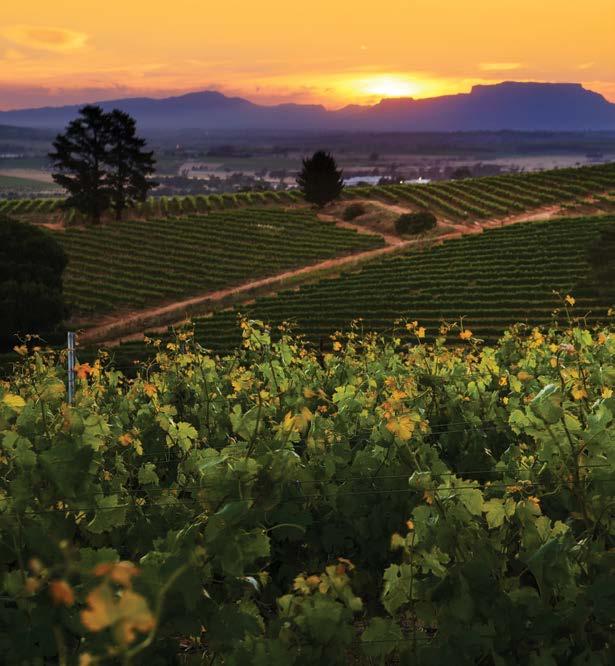
One of the leading estates in South Africa, Warwick sits on the lower slopes on the north-western side of Simonsberg Mountain in Stellenbosch. The vineyards were established by Stan and Norma Ratcliffe in the 1960s. The family sold the estate last year although Norma, the first female winemaker in South Africa remains a doyenne of the wine industry in Stellenbosch. I met Christiane von Armin, the newly appointed young, dynamic CEO last year. Christiane comes with an impressive wine background. Certainly, Norma, who has been a strong supporter of women in wine was super happy to hear of her appointment. A new winemaker, Johannes Diederick Pretorius, known as JD, was appointed from the 2019 vintage.
1605
PRODUCER FOR THIS CELLAR
WARWICK THE FIRST LADY SAUVIGNON BLANC, WESTERN CAPE, 2019
Sauvignon Blanc
$ 23.00 $ 138.00

The 2019 First Lady Sauvignon Blanc exhibits restrained rather than exuberant aromas with hints of fresh grass and lime leaves. It is soft and light on the palate with a refreshing crisp acidity and flavours of lemon, lime and lemongrass leading to a bitter lemon finish.
Lemon, lime, lemongrass, [01]
Salmon poké bowl

1606
WARWICK THE FIRST LADY CHARDONNAY, WESTERN CAPE, 2019
Chardonnay $ 23.00 $ 138.00
More expressive than the Sauvignon Blanc at the time of tasting, Warwick’s Chardonnay has aromas of passionfruit and ripe nectarines. It is medium bodied with a long white peach finish. Grapes were picked in the early morning hours, destemmed and crushed straight to the press. The juice was fermented at low temperature with a small proportion (8%) fermented in oak to add depth.
White peaches, [00]
cauliflower salad
1607
WARWICK THE FIRST LADY ROSÉ, WESTERN CAPE, 2019
Pinotage
$ 23.00 $ 138.00

Very pale salmon pink in colour, the 2019 First Lady Rosé has delicate fresh fruit aromas of strawberries with cream and just a hint of smoke in the background. It was made from 100% Pinotage. Grapes were picked early in the season to produce a light style, at just 11.5% alcohol. It is crisp on the palate with flavours of fresh apples and pear drops.
2020-2021, M8 D9
Fresh fruits, strawberries and cream 6°C
Pears, crisp, [00]
For di latte with marinated courgettes, nectarine and radish dressing
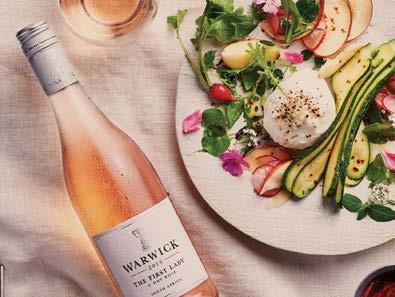
1608
WARWICK THE FIRST LADY CABERNET SAUVIGNON, WESTERN CAPE, 2018
Cabernet Sauvignon
$ 23.00 $ 138.00
2020-2023, M7 D9

Fantastic value Cabernet Sauvignon with potential for some cellaring. 2018 First Lady Cabernet Sauvignon is vibrant in colour with savoury smoky aromas. Fresh black fruits emerge on the palate with blackcurrants, blackberries and wine gum flavours. A smooth wine with some structure, it has a balanced acidity and slightly chewy finish. Produced from grapes from some of the younger vines on the estate, wines spent 7 to 14 days on skins depending on the tannin structure and were matured for 18 months in different types of oak. Many of Warwick’s vineyards are on elevated slopes of the Simonsberg Mountain. The cooling influence of elevation and good water holding capacities of the soils allow grapes to fully ripen, even in years suffering with drought and heat spikes.
1609

Lots of appealing plummy fruits, raspberries, some floral notes, toast and a touch of pencil shavings aromas are all present. Cape Lady Cape Blend 2018 is supple with more red fruits on the palate leading to a grippy, bitter cherry and dark chocolate finish. It is a blend of 50% Merlot, 30% Pinotage and 20% Cabernet Sauvignon. Each grape variety was harvested and fermented separately, then matured for 14 months in old French oak barrels before the final blending and bottling.


1610
WARWICK ESTATE PINOTAGE, OLD BUSH VINES, STELLENBOSCH, 2018
Pinotage
$ 29.00 $ 174.00

Pinotage is a specialty of South Africa – I cannot recall ever having tasted this grape variety grown anywhere, else although I know a small number of hectares are planted in other areas of the world. Bred in the 1920s at Stellenbosch University, it is a cross between Pinot Noir and Cinsault. The first commercial planting was in the 1940s, but the Pinotage Association was only established in the mid 90s. Today it represents about 16% of black grape vineyards planted in South Africa. Warwick’s Pinotage is made from grapes grown on old bush vines. It has aromas of red berries, raspberries and cherries. Red fruit flavours continue on the palate with some bitter chocolate characters, adding length. A medium bodied and succulent wine.

1611
WARWICK THREE CAPE LADIES, STELLENBOSCH, 2017
Cabernet Sauvignon, Pinotage, Cabernet Franc
$ 38.00 $ 228.00
A full-bodied wine which needs some time to soften, it is very concentrated. 2017 was a super quality vintage in Stellenbosch and has lots of potential. Three Cape Ladies was named after three generations of female personalities at Warwick. The 2017 is intense in colour with dark fruits, spices and mint aromas. A sour blackberry flavour, grainy texture and firm chewy finish add to the personality – a little austere right now, it should mellow with age. 2017 sees the return of Pinotage to the blend for the first time since 2014. It accounts for 22% of the final assemblage combined with 63% Cabernet Sauvignon and 12% Cabernet Franc. Each variety was vinified separately then matured in French oak barrels with 10% new for 27 months.
ESTATE TRILOGY, SIMONSBERG-STELLENBOSCH, 2016 (WOOD CASE)
Cabernet Franc, Cabernet Sauvignon, Merlot
$ 56.00 $ 336.00

Trilogy is Warwick’s flagship wine and became an icon wine for Stellenbosch and South Africa. Produced every year since 1986, it was conceived as a tri-varietal Bordeaux style wine made from Cabernet Sauvignon, Cabernet franc and Merlot. The blend was predominantly Cabernet Sauvignon until 2015, when Cabernet Franc took the lead for the first time. The 2016 blend is also dominated by Cabernet Franc at 51% combined with 34% Cabernet Sauvignon and 15% Merlot. The bouquet comprises notes of red cherries, leather and smoke. More cherry fruits and flavours of redcurrants emerge on the palate, complemented by vanilla and toast. It is medium to full bodied with great concentration and some firm grainy tannins on the finish. Matured for 27 months in French oak barrels with 60% new, only the best barrels from the best blocks were selected.
2021-2030, M5 D7
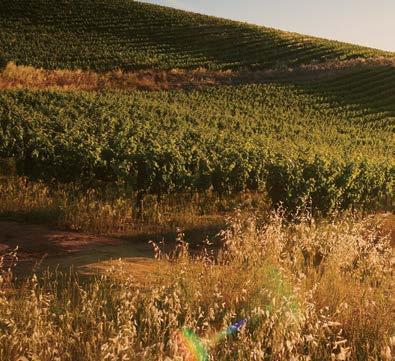
Two bottles each 2007, 2008 & 2009
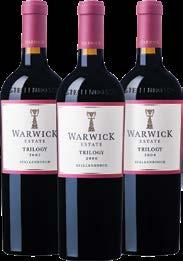
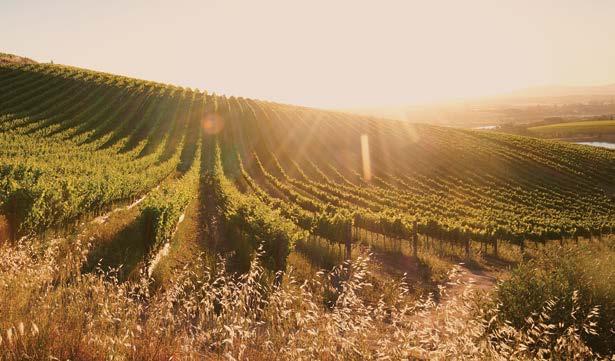
WARWICK ESTATE TRILOGY, SIMONSBERGSTELLENBOSCH, 2007
Cabernet Sauvignon, Merlot, Cabernet Franc
My favourite of the three selected vintages, 2007 Trilogy is a dense plum colour, showing just a touch of brickish hue around the rim. Its mellow bouquet exudes forest fruits and autumnal undergrowth with a touch of mint and vanilla. It is smooth and medium bodied with elegant tannin structure, delicious for drinking now but there is no hurry. Soft and refined it has fleshy red fruits, mulberry, raspberry and a long vanilla finish.
2020-2025, M8 D9
Forest fruits, autumn undergrowth, mint, vanilla 18°C
Mulberry, raspberries, vanilla
Cassoulet of bacon and Toulouse sau-sage with confit pheasant
WARWICK ESTATE TRILOGY, SIMONSBERGSTELLENBOSCH, 2008
Cabernet Sauvignon, Cabernet Franc, Merlot
2008 is similarly deep in colour with incense, ash, mulberries and spicy aromas. A more marked acidity gives the wine vibrancy with firm tannins and a chewy finish. Bottled in June 2010, it is a blend of 60% Cabernet Sauvignon, 30% Cabernet Franc with 10% Merlot. It was aged in oak for 24 months with 60% new.
autumnal,
Mulberries, firm tannin
Red wine and rosemary marinated lamb shank on buttered polenta
WARWICK ESTATE TRILOGY, SIMONSBERGSTELLENBOSCH, 2009
Cabernet Sauvignon, Cabernet Franc, Merlot
Blackcurrants, violets and spices lie over a raspberry background and lead to a supple palate with structure and texture closer to that of the 2007 rather than the 2008. Fine grained tannins, fresh fruits and integrated oak combine to produce a really classy wine. 60% Cabernet Sauvignon, 29% Cabernet Franc, 11% Merlot, matured for 27 months in French oak.
Fine grained tannins
Pancetta-wrapped venison loin with blackberry and mint sauce
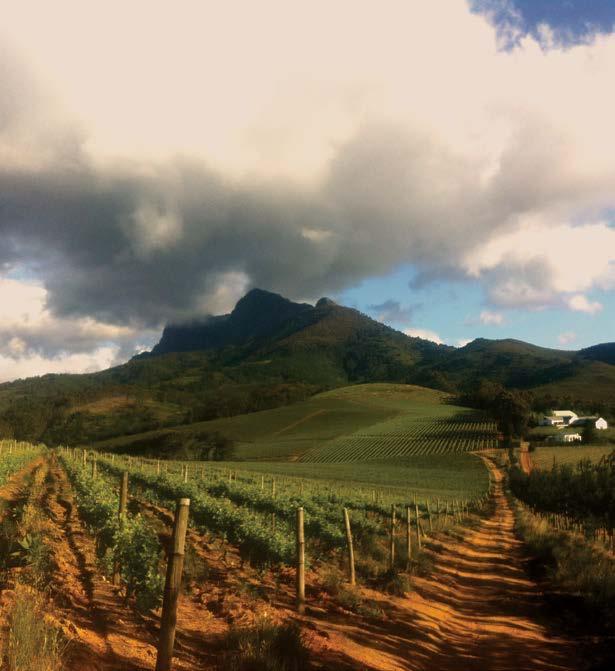

1615

MARIANNE MERLOT, SIMONSBERG-PAARL, 2015
$ 42.00 $ 252.00
A wine for those members wanting to enjoy already developed complex wines without having to wait! Intense in colour, the 2015 Merlot from Marianne has a tertiary bouquet with cedary aromas combined with dried leaves, tobacco, vanilla, black olive and savoury meaty notes. It is medium bodied with a supple mid palate and a fine powdery texture. The owner of Marianne Wine Estate, Christian Dauriac, also owns several right bank estates in Bordeaux. At Marianne he has created a luxury guesthouse and restaurant set amongst the vines between Stellenbosch and Paarl. Wines are made in the state-of-the-art boutique winery by Jos Van Wyk with minimal intervention winemaking, followed by barrel and bottle maturation prior to release. This is nicely developed and ready for immediate drinking, yet has the vibrancy and fruit to maintain it at its peak for several years to come.
Liquorice, dark fruit
Sosaties (South African lamb and apri-cot kebabs)

“Quote.“
The Vilafonté winery, in Stellenbosch, is one of only three urban wineries in the area. As part of a historical brandy distillery, from the outside you wouldn’t necessarily know it houses a winery, let alone one that makes some of the best wines in South Africa. Inside, it is functional and well designed for the production of highquality wines. The secret to the wines is the 18 hectares of Paarl vineyards planted on benchlands of the Simonsberg Mountain on old vilafonté soils. These were established by American consultants Phil Freese and his wife Zelma Long in 1996. Initially invited to judge wine in South Africa when sanctions were lifted in the early 90s, Zelma and Phil fell in love with the country. In the process of clearing the virgin land for planting, many prehistoric stone-age relics were discovered. The third partner, Mike Ratcliffe, previously owner and CEO of Warwick, runs the business throughout the year with wines made by Chris de Vries and vineyards tended to by Edward Pietersen. Zelma and Phil spend two to three months during harvest and again later in the year to finalize the blends — no mean feat, given 64 different blending components are made in just one vintage.
1616
SERIOUSLY OLD DIRT BY VILAFONTÉ, PAARL, 2017
Malbec, Merlot, Cabernet Sauvignon, Cabernet Franc $ 49.00 $ 294.00

Seriously Old Dirt refers to the ancient vilafonté soils dated between 750,000 to 1.5 million years old, on which the vines are cultivated. The 2017 Seriously Old Dirt is a deep ruby colour with warm aromas of mixed cooked fruits, vermouth herbs, floral notes and a hint of leather. Rich and supple, it is full bodied and has mellow flavours with vanilla, cooked brambly fruits and lingering bitter cherry flavours. Perfect ripening conditions produced a good harvest with grapes picked from February 6th. The 2017 is a blend of 37% Malbec, 36% Merlot, 26% Cabernet Sauvignon and 1% Cabernet Franc. Wine were matured for 21 months in older French oak barrels.

1617 VILAFONTÉ SERIES M, PAARL, 2016 (WOOD CASE)
Malbec, Merlot, Cabernet Sauvignon, Cabernet Franc
$ 78.00 $ 468.00
Series M is one of the collectable flagship wines from Vilafonté. A soft rounded and fleshy style produced from a particular section of the estate. 2016 Series M has mellow cherry, fresh ripe fruits, and vanilla aromas which are intense, enhanced with some toffee character giving the wine lots of appeal. Initially soft and concentrated on the palate, it builds in the mouth to a firm finish with some fine textured tannins. Delicious to drink now, it will develop more tertiary notes with time. Produced from a blend of 50% Malbec, 36% Merlot, 12% Cabernet Sauvignon and 2% Cabernet Franc, it is ripe and supple. The severe drought led to Vilafonté’s smallest per-hectare crop on record. The warm dry growing season produced an early harvest which started on February 3rd, 2016 and concluded under cooler conditions with Cabernet Sauvignon.
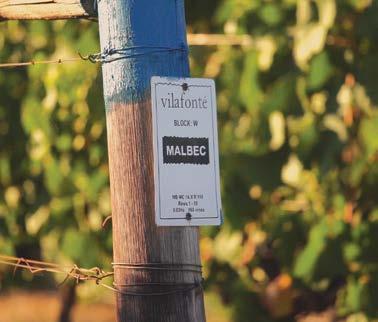

1618 VILAFONTÉ SERIES M, PAARL, VINTAGES (WOOD CASE)
$ 84.00 $ 504.00
Vilafonté estate was established over 20 years ago on benchlands of the Simonsberg Mountain. The partners fell in love with the land and believed its soils had the potential to produce something really special. It takes time to clear land, plant vines and cultivate grapes let alone for the wines produced to demonstrate their potential for aging. This vertical case compares three vintages. Based on Malbec, Merlot and Cabernet grapes, the varietal composition of each vintage varies according to the growing season conditions and is based on extensive evaluation and blending process by Zelma and the winemaking team.
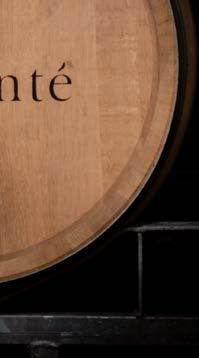
Merlot, Malbec, Cabernet Sauvignon

Deep brick ruby in colour, the 2012 has aromas of forest floor, smoke, incense and dark fruits. Ripe fruits are present on the palate, which is supple, rich and smooth with more floral notes emerging and a herbal edge. A complex and satisfying wine finishing with blackcurrant, black cherries and bitter cherry flavours. Cool weather in spring led to a delayed flowering followed by drier than normal conditions for January and February. The 2012 blend is a majority of Merlot with 35% Malbec and 17% Cabernet Sauvignon. Only a modest amount of new oak was used to mature the wine for 16 months in French oak barrels.
2020-2030, M8 D9
Forest floor, incense, dark fruits 18°C
Floral, herbal edge, blackcurrant, black cherries
Braised lamb shanks with caramelized onions and shallots, served with potato and root vegetable mash
Malbec, Merlot, Cabernet Sauvignon

Vilafonté’s vineyards were protected by their location on the northern side of the Simonsberg Mountain from devastating winds that hit many vineyards in Stellenbosch in 2013. The 2013 Series M is a Malbec-driven wine that has a slight brick edge to the colour and aromas of ripe cooked fruits, spices and blackcurrant leaf. It is medium bodied with nice weight but slightly lighter than the 2014 and ready for earlier drinking. A fine elegant wine with a long cedary finish. It was matured for 20 months in French oak barrels with 17% new.
2020-2030, M7 D9
Cooked fruits, spices, blackcurrant leaf 18°C
Smooth, cedary finish
Veal tenderloin with roasted garlic, Gorgonzola and mushrooms
Two bottles each 2012, 2013 & 2014
Merlot, Malbec, Cabernet Sauvignon
2021-2034, M5 D7
Sweet aromas, Parma violets, vanilla, blueberries 18°C
Blackcurrant, cedar
Pan-seared lamb chops with basil gremolata

Showing no obvious colour development, the 2014 has sweet and appealing aromas of Parma violets, vanilla, blueberries and blackcurrants with a cedary counterpoint. This is a concentrated wine full of soft ripe fruits. It is smooth and structured, dense with fine powdery tannins, youthful dark fruit flavours and a supple finish with good acidity. Harvest started slightly later than usual with consistent conditions and even ripening throughout the vineyard. A great vintage for Merlot which represents 39% of the blend with 36% Malbec and 25% Cabernet Sauvignon providing structure.
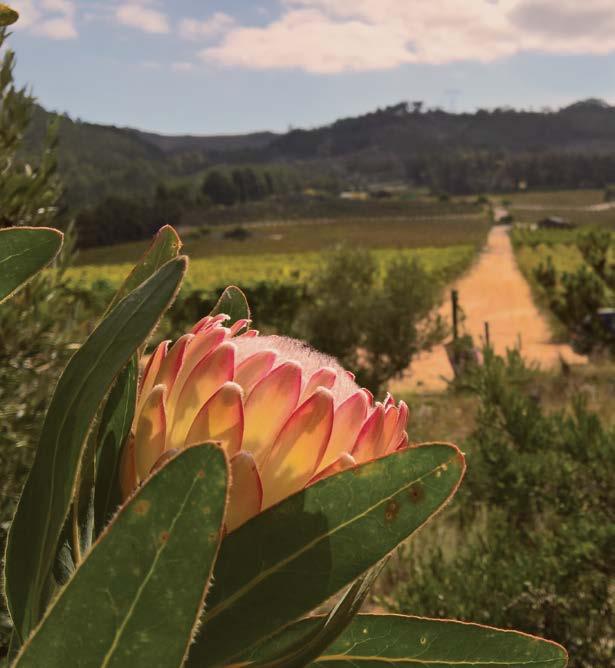
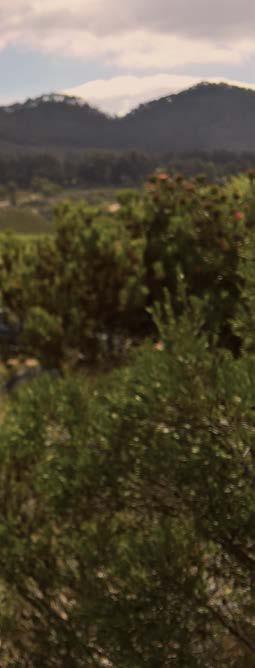
There is no hiding from it, Richard Kershaw is a wine geek. His quirky, eccentric personality hides a seriousness and determined drive. Born and raised in the UK, Richard trained as a chef before embarking on a career in wine. After travelling and working around the world, he settled in South Africa in 1999, initially working for Mulderbosch and Kanu wineries. In 2012 he established Richard Kershaw Wines in Elgin where he lives with his wife, two daughters, three black labs, various cats, hens and other creatures. Richard’s aim is to produce worldclass wines, equal to the best from traditional cool climate regions. His wines are made from the best clones of noble grape varieties such as Chardonnay, Syrah and Pinot Noir grown on the best sites.
Elgin Valley, close to South Africa’s most southern tip at Cape Agulhas, is the coolest wine region in South Africa and is traditionally a premium apple growing area. Its climate is more closely similar to that of Burgundy than any other region. At an elevation of 300 metres, the valley is a natural amphitheatre facing towards the ocean and surrounded by mountains 7001000 metres in height. Its cool temperature is a result of its proximity to the ocean and altitude. Ocean winds bring in clouds which also reduce UV light, allowing a long slow ripening of grapes. Its relative humidity, at 70-80%, is higher than in other regions and alters the refraction of light stimulating the vines to produce different flavours in the grapes.
1619
Chardonnay
$ 61.00 $ 366.00

A stunning wine, delicious to drink now but with much more potential.
Pale in colour, the Clonal Selection
2018 Chardonnay has an intense bouquet with toasty oak, vanilla and stone fruits all jostling for a position. Still youthful on the palate, it already displays great depth of flavour with lemon, oatmeal, spices and a lingering passionfruit and toasty finish. The oak will integrate further with some cellaring. A complex wine with great balance and potential. Wet cool windy weather during flowering in 2018 in Elgin lead to measly yields as low as 18 hectolitres/ hectare for Chardonnay. Sporadic showers during the growing season helped provide some relief to the vines. The cooler than normal weather meant a slow ripening of grapes and lots of flavour. Dates for picking are decided upon by Richard, based on tasting of the grapes once analytical targets for sugar, acidity and pH have been met. In this case, grapes were hand-picked in the early autumnal mornings between March 1st and March 20th and immediately whole-bunch pressed with juice flowing directly to barrel via gravity. After spontaneous fermentation, the wine was matured a further 11 months in barrel. Richard and his right-hand man Dudley, taste and evaluate every single barrel every six weeks to monitor the evolution of each.
2020-2025,
Syrah
$ 61.00 $ 366.00
An ethereal wine, relatively light in body yet intense and complex in flavour. Produced from two Syrah clones – SH9c and SH22 – cultivated in five small parcels in Elgin. Intense aromas of incense, dark chocolate and gingerbread spices mix with plums and fresh grass. It is supple with good mid palate weight and flavours of cooked plums, red cherries and chocolate leading to a long spicy finish. A year characterized by a cool winter allowing good vine dormancy and low rainfall. Flowering was a little earlier than usual, but cooler weather in December slowed things back down with these Syrah grapes harvested on March 20-24th, 2017. Grapes were picked by hand into small lug baskets, sorted and destemmed. These were then placed into a conical hopper and fed directly into open top fermenters. After a three-day maceration, fermentation started spontaneously with skins remaining in contact with the wine for 26 days, before transfer to barrel for malolactic and maturation for 17 months. Richard sources his barrels from a small number of artisanal coopers in Burgundy and Rhône, only using French oak with 45% of new oak.

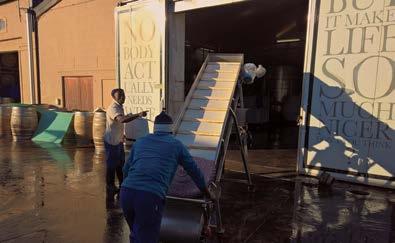

1621
THE SMUGGLER’S BOOT SAUVIGNON BLANC SEMILLON, WESTERN CAPE, 2018
Semillon, Sauvignon Blanc
$ 31.00 $ 186.00
The Smuggler’s Boot range of wines produced by Richard is named after the time when South Africa was cut off from the rest of the world by trade embargoes. Grape growers and winemakers would smuggle cuttings into the country hidden in their Wellington boots. Grapes for these wines are sourced mainly from Elgin but also some plots further afield. The Sauvignon Blanc Semillon has delicious lime and creamy aromas over a flinty background. On the palate, passionfruit and mango flavours show through with a good mid palate and fresh crisp limey finish. It is a blend of 46% Sauvignon Blanc and 54% Semillon. All grapes were hand picked between February 22nd through to April 5th for the final lots of Semillon. Sauvignon Blanc was fermented at low temperature in tank and the Semillon in a mix of new and one-year old oak barrels.

1622
THE SMUGGLER’S BOOT PINOT NOIR, ELGIN,
33.00 $ 198.00

A Pinot Noir with all the hallmarks of a much more expensive Pinot wine. It is a translucent ruby colour with redcurrants and other red fruits aromas mingling with fresh herbs. On the palate it is supple and elegant, light in tannin with a long lingering finish. It was produced from three French clones of Pinot Noir (PN667, PN115 and PN113) cultivated in Elgin and picked between February 14th and 24th, 2017. After sorting and destemming the grapes, these were left to macerate in open top fermenters for three days prior to the onset of fermentation. The wine was racked into a combination of French oak barrels and breathable plastic eggs for malolactic fermentation and matured for 11 months.


Now into its third year, Aristea wines continue to get better each year. Aristea is a joint project between Martin Krajewski, owner of Clos Cantenac in SaintÉmilion, Matt Krone a twelfth-generation winemaker from the Cape, and international consultant Florent Dumeau. Matt is the man on the ground, literally walking the vineyards, identifying the best grapes and making the wines. Martin has recently built a home in Constantia and spends a significant amount of the year in the Cape negotiating with grape growers to secure the best grapes. The threesome work together to agree on final blends for each wine and have capped the number of bottles produced of any one wine to just 6,000 per year. They purchase two to three times the quantity of grapes needed, giving them the flexibility to taste barrel by barrel and select only the very best, and it shows – the three wines below were all very high scoring wines in my tasting.
Unsurprisingly, interest and demand for Aristea wines also continues to grow. They are now available in Japan, Taiwan and Kenya, including some of the most exclusive Safari lodges and the famous Muthaiga Club in Nairobi.
1623
Chardonnay, Pinot Noir
$ 48.00 $ 288.00

The Krone name in South Africa has been strongly associated with Sparkling or Méthode Cap Classic wines as they are known in the Cape, for centuries. Matt, as twelfth generation winemaker, continues the tradition. Pale salmon in colour, Aristea sparkling rosé has delicious and intense aromas of hazelnuts and toast. It is rich with ripe red fruit flavours, a creamy texture with fine mousse and great depth. Chardonnay and Pinot Noir grapes were handpicked in the cool early morning hours of January 18th and 24th, respectively. The bunches of grapes were gently pressed, and the first best free run juices fermented to produce the base wines. The blended cuvée was then bottled and underwent a lengthy secondary fermentation and maturation on lees for 24 months.
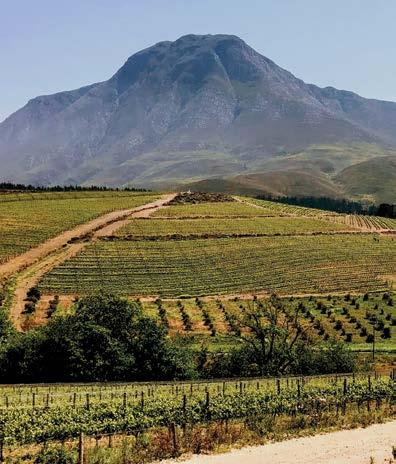
Chardonnay
$ 51.00 $ 306.00

This is a subtle yet complex wine with layers of flavour and lots of appeal. Aromas of custard tarts, toast and jasmine and other floral notes lead to a soft and smooth palate. It is elegant with flavours of peaches, apricot, vanilla, lemon and oranges all emerging in the mouth then ending on a citrus pith finish creating length. Chardonnay from vineyards in the Polkadraal sub-region to the west of Stellenbosch was picked on February 1st, 2018 into small lug boxes and stored overnight in a cold room. Half the grapes were whole bunch pressed, the balance de-stemmed and crushed. After fermentation in barrels the wine was matured for a further 11 months using 35% new, 35% second fill and 30% third fill barrels with regular “bâtonnage” or lees stirring. A classy wine with integrated oak and lots of potential for cellaring.
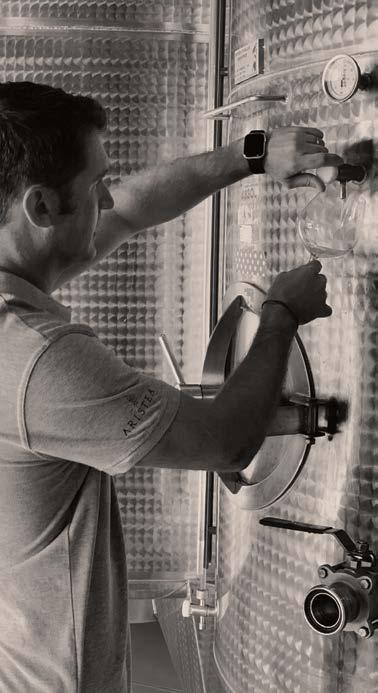

It’s the third year of production of Aristea, and the wines continue to get better each year. I raved about the 2016 Cabernet Sauvignon and the 2017 is another “Coup de Coeur”. Deep ruby in colour, it has herbal aromas with green beans and mint over a dark fruit background. More blackcurrant and plum fruits emerge on the palate with vanilla cream and a fine silky texture. This is an elegant wine with structure which is medium to full bodied. The fine tannins are complemented with a balanced acidity and a long bitter chocolate and savoury finish. Cabernet Sauvignon grapes were picked in the cool hours and chilled to 5°C overnight. Grapes were destemmed and crushed into open top tanks and left to macerate for 12 hours before inducing fermentation. Regular punching down of the grape skins five to six times per day was carried out while fermenting at 25°C. The wine was transferred to barrel for malolactic fermentation and aged a further 18 months in medium toasted French oak barrels. Only 2,470 bottles of the 2017 were produced in total. Grapes were sourced from three growers all within Stellenbosch’s so called “golden triangle” with low yields of between 4-6 tons/hectare.
Dark fruits, vanilla, bitter chocolate
Fire-grilled

1627
Groote Post estate lies in the Darling Hills on the Cape’s West Coast, approximately an hour’s drive north of Cape Town. It is a historic estate with a traditional Dutch gabled homestead dating back to 1808 and was originally a guarding post against cattle rustlers. The Pentz family originally owned a dairy business producing milk and delivering direct-to-door in Cape Town. The family no longer have a dairy herd, but the 3000-hectare estate raises sheep and cattle and grows cereal crops and includes a restaurant, Hilda’s Kitchen, which serves their delicious homegrown produce. 117 hectares of vineyards are planted on cooler slopes on clay soils benefitting from the ocean breezes, with wines made by Lukas Wentzel.
THE OLD MAN’S BLEND, WHITE, WESTERN CAPE, GROOTE POST, 2019
Sauvignon Blanc, Chenin Blanc
23.00
138.00
Honeysuckle, green apple and a slight earthiness lead to a supple palate with good mid palate weight. The majority of the blend in 2019 is Sauvignon Blanc, giving the wine a good firm acidity, yet the flavour of Chenin Blanc is apparent, adding an appealing savoury finish. The two components were vinified separately in tank, then blended in different ratios until Lukas is confident it will meet with the “Old Man’s” (Peter Pentz) approval.
2020-2021, M8 D9
Honeysuckle, some earthiness, green apple 5°C
Firm, savoury finish, [00]
Thai fish cakes with a coriander and sweet chili sauce

1628 THE OLD MAN’S BLEND, RED, WESTERN CAPE, GROOTE POST, 2019
Merlot, Cabernet Sauvignon, Shiraz
$ 24.00 $ 144.00

Fresh red apples, dark fruit and some green pepper aromas combine and lead to a medium bodied wine with some structure. Produced from a blend of 50% Merlot, 30% Cabernet Sauvignon and 20% Shiraz, 2019 was a great vintage for all three varieties at Groote Post. Vines planted in 1995 at 400 metres are all dry farmed and despite the drought achieved optimum ripeness. Wines were matured in old 300-litre French oak barrels for 10 months. A rigorous selection was made for the final blend.
2020-2022, M8 D9
Dark fruits, green pepper 18°C
Medium bodied
1629
GROOTE POST SAUVIGNON BLANC, DARLING HILLS, 2019
Sauvignon Blanc
$ 26.00 $ 156.00
A stunning Sauvignon Blanc from Groote Post. Sauvignon Blanc is the variety that spearheaded the development of viticulture in the Darling region – the cooling influence of the nearby Atlantic brings out all its flavour. And this is probably the best Sauvignon from Groote Post that I have tasted over the years. It has intense aromas of lime fruit, greengages, gooseberries with a hint of boxwood. Delicious fruits continue through on the palate. It is complex and moreish with a long fresh finish. Vines were planted in 1992 and 2002 and after three years of lower than normal rainfall the team were concerned for the vines. However, the northern facing slopes and deep clay rich soils have great moisture retaining properties, yields were down but the quality is excellent.

Baked red snapper in dill sauce
Darling Hill’s maritime influences make it the “darling” region for Sauvignon Blanc!
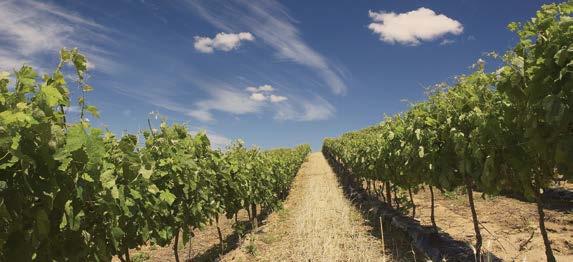
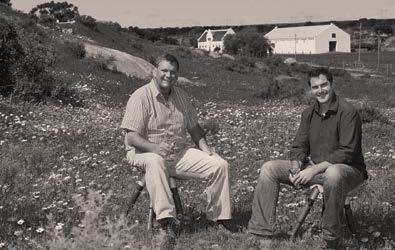
1632

Black fruits, mulberries, spices and savoury black olive aromas are all on show in Groote Post’s 2017 Merlot. The plate is firm and structured with more woody flavours emerging. 2017 produced a small crop of grapes which were selected on the sorting table then underwent a cold maceration for four days. This is a medium to full bodied Merlot which is concentrated and dense with a long bitter black liquorice finish. It has not yet reached its peak. After fermentation and 14 days on skins, the wine was matured in 300-litre French oak barrels with 35% new, 50% second fill and 15% third fill.

It should come as no surprise that Shiraz is one of Lukas’s favourite grape varieties having spent time and made wine in the Rhône Valley in France. The vines were planted in 2001 and 2002 on sites close to the ocean. Lukas harvests the grapes at two ripeness levels in order to capture different flavours to create a more complex wine. Deep plum in colour, the 2018 has brambly forest fruit aromas with cut grass and vanilla components. It is concentrated and supple on the palate with bitter cherry flavours giving length, a grainy texture and quite a firm rustic finish. It was matured for 14 months in 300-litre oak barrels with 25% new and using 10% American oak.
GROOTE POST SEASALTER SAUVIGNON BLANC, DARLING HILLS, 2019
Sauvignon Blanc, Semillon
$ 30.00 $ 180.00
An immediate favourite, Seasalter 2019 has stone fruit and mineral aromas. On the palate passionfruit, lemon, lime and mango all make a play. Produced from 90% Sauvignon, 30% of which was fermented and aged in 300-litre French oak barrels with the balance fermented in tank and 10% Semillon. The final wine is elegant with good depth and some complexity. Vines cultivated on south facing slopes at 250 metres reflect the character of the Darling region and its maritime influences.



Paul Sapin Wines was founded in 1889 by two brothers, Paul and Lucien, to sell local Beaujolais wines. The company was purchased by Thierry Coulon in 1996.He expanded beyond the local region, purchasing vineyards in Southern France and sourcing and bottling wines from around the world. Thierry continues to lead the company and remains as obsessive as ever about quality and value for money.
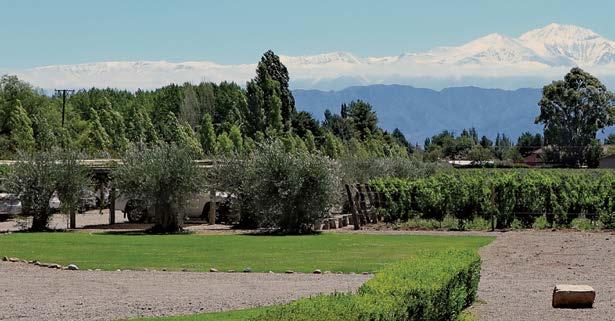
Plummy fruits and ripe berry aromas with crushed red fruits on the palate. This is a soft smooth and very drinkable Malbec.


With fresh gooseberries and lime, this is an elegant wine with good intensity of flavour. It is smooth with gooseberry fool and cream flavours which remain on the palate.
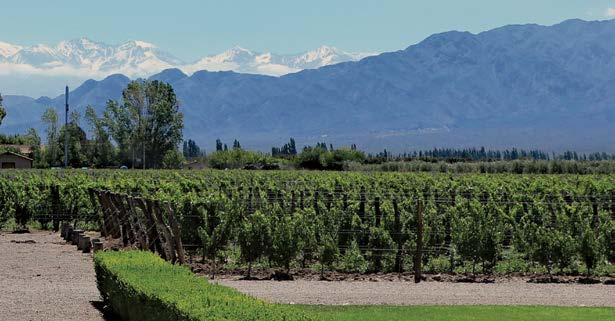
Paul Sapin’s Paulita range packs a punch. Order today!
1635
PAULITA RESERVA CABERNET SAUVIGNON, CENTRAL VALLEY, 2019
Cabernet Sauvignon
$ 17.00 $ 204.00

Produced in Chile’s Central Valley, Paulita Cabernet Sauvignon has nice black cherry and blackberry flavours, with a more savoury edge and grippy finish to it than the Merlot.
1636 PAULITA RESERVA MERLOT, CENTRAL VALLEY, 2019
Merlot
$ 17.00 $ 204.00
A succulent Merlot brimming with jammy fruits and black berry jam flavours. It is succulent with nice body mid palate and a soft finish.

1637
BABINGTON BROOK CHARDONNAY, SOUTH EASTERN AUSTRALIA, 2019
Chardonnay
$ 17.00 $ 204.00

A great easy drinking Aussie Chardonnay with intense ripe fruits – melon and passionfruit, orange and mandarin. It is supple with a long and crisp lemon finish.
2020-2021, M8 D9
Ripe melon, passionfruit 6°C
Orange, mandarin, [01]
1638
ON THE BILLABONG SHIRAZ CABERNET SAUVIGNON, SOUTH EASTERN AUSTRALIA, 2019
Shiraz, Cabernet Sauvignon
$ 18.00 $ 216.00

Shiraz Cabernet blends are synonymous with Australia. On the Billabong 2019 is vibrant in colour with dark fruit aromas and just a slight whiff of oak. Cherries and sour cranberry flavours shine through on the palate with a juicy acidity. Grapes, grown in New South Wales on fertile and sandy soils were fermented for a short time on skins.
2020-2022, M8 D9
Dark fruits 18°C
Sour cherries
Mixed platter of Italian meats, cheeses, olives and tomatoes
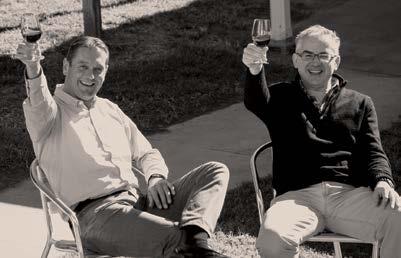

1639 JAMES THOMPSON SAUVIGNON BLANC, MARLBOROUGH, 2019
Sauvignon Blanc
$ 24.00 $ 288.00
Previously known as Mount Vernon, James Thompson Sauvignon Blanc has pungent aromas of gooseberries, green fruits and herbs, preceding more limes and greengages on the palate complemented by a hint of smoke. This is a mineral wine with a tart acidity and long sour lime finish. Sauvignon Blanc grapes came from the Wairau and Awatere valley in Marlborough and were predominantly fermented in stainless steel tanks with a small portion in seasoned French oak.
Pungent green fruits, gooseberries 6°C
Greengages, hint of smoke, sour lime
Cajun flavoured shrimip

1640 KLOOF-EN-BERG CHENIN BLANC, WESTERN CAPE, 2019
Chenin Blanc $ 16.00 $ 192.00
Subtle aromas of honeysuckle with a hint of elderflower are immediately appealing. This is a crisp dry Chenin Blanc with fresh apple flavours. Chenin Blanc was grown in the Cape in some of the most northerly vineyards of the southern hemisphere.
apples, [01]

1641
KLOOF-EN-BERG SHIRAZ, WESTERN CAPE, 2019

A combination of berry fruits and savoury aromas lead to a nice juicy palate with good fruit and depth. Kloof-en-Berg vines were planted 12 years ago on alluvial sands and granite slopes. The wine was matured for a short time in barrel.
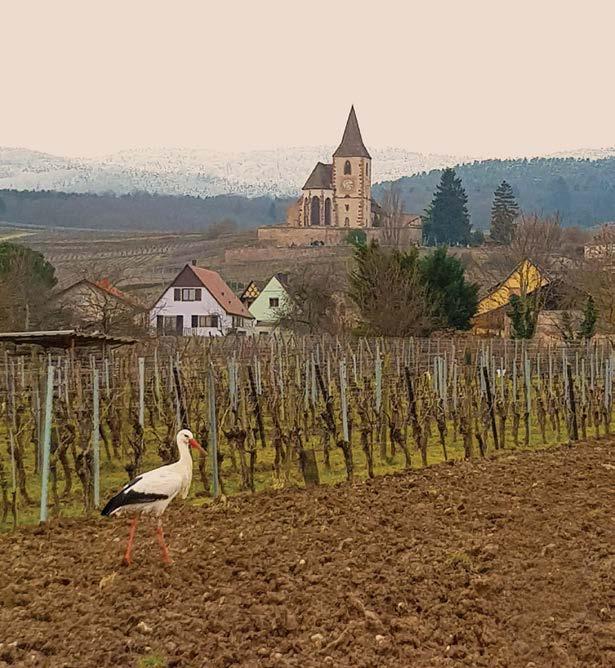
Cave Vinicole de Hunawihr is a cave coopérative based in the heart of Alsace. It was established by a small group of producers in 1954 when Alsace was still trying to recover from the devastation of the Second World War. The winemaking team works closely with the cooperative’s 110 growers to produce wines from traditional varieties grown in the region. Alsace is known for aromatic varieties such as Riesling, Gewurztraminer and Pinot Gris, as well as more subtle styles made from grapes like Pinot Blanc. Located in the north of France close to the border with Germany, it is protected by the Vosges mountains and has a semi-continental climate with low rainfall and surprisingly high sunshine hours. It is a region known for its rich traditional cuisine which incorporates German traditions with Choucroute, a local variety of Sauerkraut a firm favourite. Unsurprisingly, its wines match well with a variety of foods and Alsatian Rieslings have potential to age.
PRODUCER FOR THIS CELLAR

1642
PETER WEBER BRUT, MÉTHODE TRADITIONNELLE, ROSÉ, AOC CRÉMANT D’ALSACE, NV
$ 29.00 $ 174.00
Salmon pink in colour, Peter Weber Rosé has subtle red fruit aromas with strawberry and cherry. Produced using the same winemaking process as Champagne from 100% Pinot Noir, this is a serious style with vinous character, good depth on the palate and a long finish.


1644
CUVÉE PRESTIGE, AOC ALSACE, 2018
Gewurztraminer
$ 28.00 $ 168.00
1645 RIESLING, VIEILLES VIGNES, AOC ALSACE, 2018
1643 PINOT BLANC, AOC ALSACE, 2018
Pinot Blanc
$ 24.00 $ 144.00
Intense aromas of nectarines and melon fruit lead to a soft, easy-drinking Alsace white. It is supple with appealing fresh fruit flavours and a long peachy finish.
2020-2021, M8 D9
Nectarine, melon 5°C
Fruity, peaches, [01]
Lorraine

Ripe nectarines, orange blossom and mandarin aromas rather than overtly floral notes give lots of appeal. It is smooth with a touch of sweetness on the finish and lingering bitter orange flavours. After fermentation at low temperature, the wine was racked and put back on fine lees to mature for six months in tank with regular stirring.
2020-2022, M8 D9
Ripe nectarines, orange blossom, man-darin 6°C
Bitter orange, [03]
Blackened mahi-mahi and asparagus with orange and sesame

Subtle white fruits precede a supple smooth palate with good mid palate fruit, followed by a refreshing crisp acidity and mineral character. A cold winter that extended through February and March lead to a late budburst in 2018 in Alsace. However, warm and sunny weather from May onwards allowed grapes to ripen and be picked under perfect conditions.
fruit, crisp, [01]
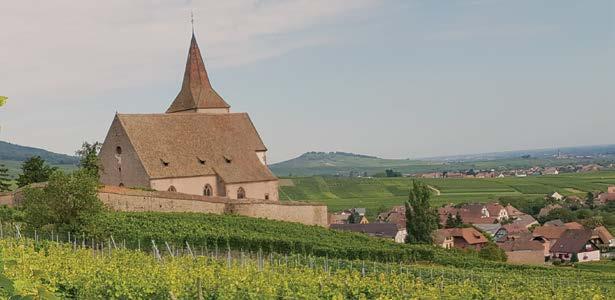
1646 RIESLING, MUEHLFORST, AOC ALSACE, 2018
Riesling
$ 26.00 $ 156.00

Bright in colour, Muehlforst Riesling 2018 is more expressive than the Vieilles Vignes, with intense aromas of lime and elderflower. On the palate it has good weight with a limey astringency typical of the variety. It has depth, a firm acidity and a lime citrus pith finish with the potential for some cellaring. I for one look forward to seeing how it develops. Lieu-dit Muehlforst is close to the Rosacker Grand cru vineyards. It has southern exposure with slopes up to 300 metres.
pith, [02]

1647 RIESLING, GRAND CRU OSTERBERG, AOC ALSACE GRAND CRU, 2018
Riesling
$ 30.00 $ 180.00
Alsace’s best vineyard sites are designated Grand Crus. Osterberg Grand Cru is made up of a total of just over 24 hectares, less than half of which are planted with Riesling. Vineyards are cultivated on the marl limestone-sandstone slopes at 250-350 metres close to the village of Ribeauville and have a south, south-east exposure. Aromas of fresh green apples with some honey lead to a palate which reveals riper fruits with nectarines and mango followed by a mineral finish. This is a supple and flavoursome Riesling with great balance and a touch of residual sweetness.
Mango, ripe nectarines, flavoursome, [02]
Honey-glazed spiced roast goose and confit potatoes


Pinot Gris
A rich and spicy wine with white pepper and nutty aromas. Initially sweet on the palate with nice fruit flavours of Galia melon, quince and pears, this is perfectly balanced by a good acidity which brings freshness and a citrus pithy finish. It has rich mid palate and oodles of lingering flavours. After a long and slow fermentation, the wine was matured on fine lees for four to six months.
$ 34.00 $ 204.00
Two different grape varieties planted in two unique spots.
Three bottles each
Pinot Gris & Gewurztraminer
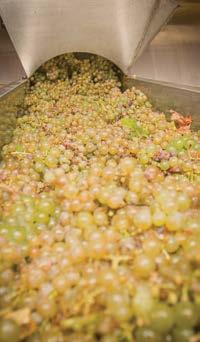
GEWURZTRAMINER, GRAND CRU ROSACKER, AOC ALSACE GRAND CRU, 2017
Gewurztraminer
Deep yellow in colour, the 2017 Gerwurztraminer has intense aromas of honeydew melon, honey, fresh fruits and lemongrass with a savoury edge. It is supple with fresh fruit flavours of lemon and grapefruit. This is a really classy wine with complexity, elegance and depth and a style which is unique to Alsace. 2017 was marked by devastating spring frosts which reduced yields dramatically, in particular for Gewurztraminer. The subsequent hot summer produced high quality concentrated wines.

PINOT GRIS, VENDANGES TARDIVES, AOC ALSACE VENDANGES TARDIVES, 2016
GEWURZTRAMINER, VENDANGES TARDIVES, AOC ALSACE VENDANGES TARDIVES, 2016
Gewurztraminer
1649 VENDANGES TARDIVES CASE $ 57.00 $ 342.00
Golden yellow in colour, the 2016 Pinot Gris Vendanges Tardives has cooked apple and apricot aromas over a savoury background with celery and tea leaves. On the palate fresh and dried apricot characters are present and the wine has a certain richness balanced nicely by a fresh tangy acidity.
Gewurztraminer 2016 Vendanges Tardives is more aromatic and seems richer and sweeter with a lower acidity although from a purely analytical point of view there is little difference. Floral aromas of orange blossom and rose petal are typical of the variety with a touch of honey. A distinctive wine with syrupy character.
apples,
Fresh and dried apricot, [07]
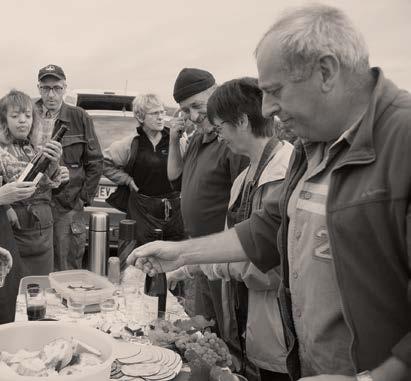
A specialty of Alsace is its sweet dessert wines – Vendanges Tardives. These are made, weather permitting, from grapes left on the vine for an extended time leading to an “overipening” with a consequent concentration, evolution of flavours and development of noble rot. Grapes are generally picked several weeks later than the main harvest.
Three bottles each
Pinot Gris & Gewurztraminer


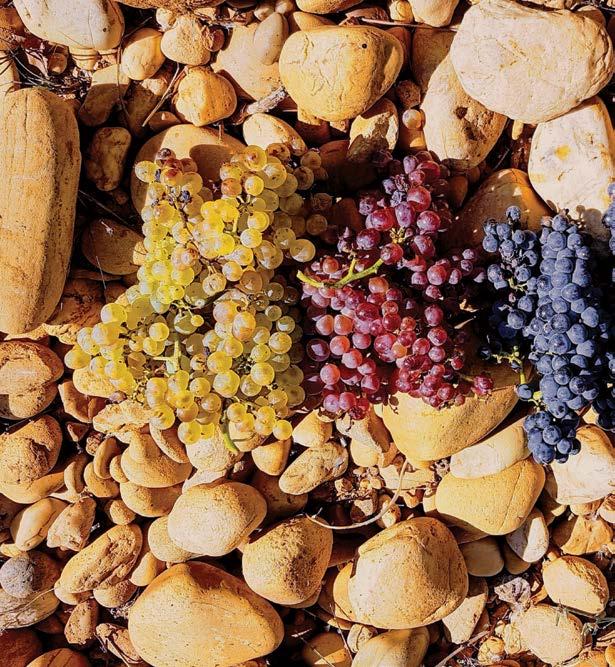
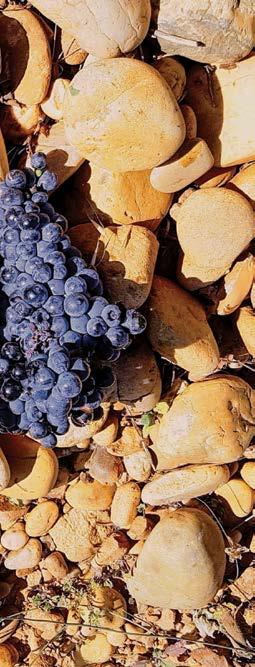
2018 was the fourth in a series of high-quality vintages in the Rhône Valley for both the southern and northern parts. September saw fine weather for grapes to fully mature with picking taking place under ideal conditions. These conditions allow for many of the producers to farm organically. Most of the producers Opimian works with in the Rhône Valley are small, family-owned estates.
1651
CHÂTEAU SAINT-BÉNÉZET, LES HAUTS DE COSTE-RIVES ROSÉ, AOC COSTIÈRES DE NÎMES, 2019
Grenache, Syrah
$ 22.00 $ 264.00

Tasted as a tank sample in early October, it is a pale baby pink colour with lots of fresh lemon and berry fruit flavours. Soft and very drinkable. It was is a 50:50 blend of Grenache and Syrah.
1652
CHÂTEAU SAINT-BÉNÉZET, LES HAUTS DE COSTE-RIVES, AOC COSTIÈRES DE NÎMES, 2018
Grenache, Syrah
$ 22.00 $ 264.00
Dense in colour with dark fruit and nutty aromas, Château Saint-Bénézet has a rich smooth palate and is velvety in texture. This is a medium to full bodied wine produced from equal amounts of Grenache and Syrah. 80 hectares of vines at Château SaintBénézet close to Nîmes are cultivated on soils littered with “galets”.
Rabbit with mushrooms and thyme

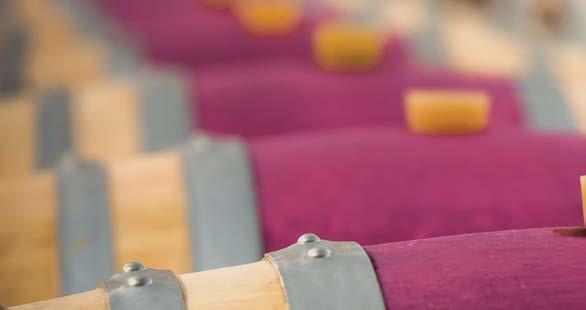
1653
Grenache, Syrah, Carignan
$ 24.00 $ 144.00

Carignan adds a savoury herbal edge to Domaine des 3 Lys, Côtes du Rhône. It is blended with 40% Grenache and 40% Syrah giving additional aromas of mint and blackberry. It is soft and juicy on the palate, smooth with nice mid palate and a tangy drying red cherry astringency.
1654
DOMAINE DES ROMARINS, AOC CÔTES DU RHÔNE, 2018
Grenache, Syrah, Carignan
$ 27.00 $ 162.00
This family-owned vineyard, located close to the village of Domazan in the southern Côtes du Rhône, has been farmed by the Fabre family for four generations. Xavier Fabre’s 2018 has appealing aromas of forest fruits and herbs, grass, red cherries and redcurrants. It is the lighter side of medium bodied, developing a firm acidity on the palate. Produced from a blend of 45% Syrah, 45% Grenache with 10% Carignan. Vineyards are planted on stony clay limestone soils and are farmed with minimal impact on the environment. The estate achieved the maximum level 3 certification Haute Valeur Environnementale from the National Commission (CNCE). Hand harvested grapes were de-stemmed and fermented at 26-28°C in concrete tanks with pump-overs twice daily.

Hunter’s pheasant cooked with
and mushrooms


2018 Cuvée Signature has intense floral aromas combined with those of vermouth, cola some aniseed and black cherry jam. Domaine du Val des Rois in Valréas was purchased by Emmanuel Bouchard’s father in 1964. Originally from the Bouchard family in Burgundy, he planted vines and transformed the ancient sheepfold into a winery. Today Emmanuel farms the land organically and also has a steady supply of truffles dug up in the vineyard. A wet start to the 2018 growing season caused some concern initially in the vineyard. However, from mid June the weather was dry and warm through to harvest. Domaine du Val des Rois specializes in Grenache and this wine is produced with 75% Grenache blended with 25% Syrah. It is a concentrated wine, tight with a firm acidity on the palate and good tannin structure. Flavours of herbs, aniseed and cherry emerge in the glass. With time it will unwind, becoming more mellow and approachable. Most of the vines are south, south-east facing on clay soils. Other than a small amount of sheep manure periodically added to nourish the vines, there is no use of agrichemicals.
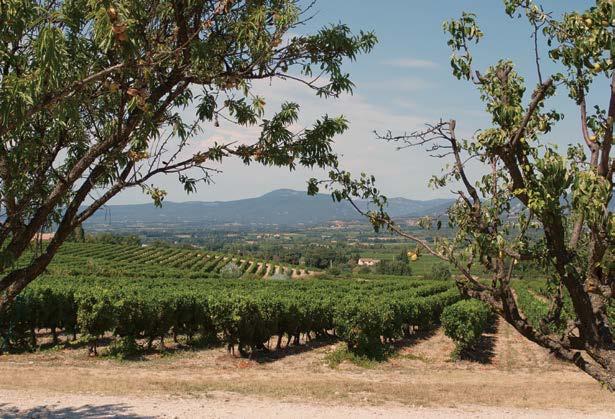
1656 CÔTES DU RHÔNE VILLAGES CASE
$ 30.00 $ 180.00
Three bottles each

DOMAINE A. BERTHET-RAYNE, CAIRANNE, VIEILLES VIGNES, AOC CÔTES DU RHÔNE VILLAGES, 2018
Grenache, Syrah, Carignan
Produced from vines with an average of 60 years of age, the Vieilles Vignes from Domaine André Berthet-Rayne is a blend of 60% Grenache, 20% Syrah and 20% Carignan. Bright ruby in colour, the 2018 displays aromas of coffee, dark fruits and smoky bacon. It is medium to full bodied with a long smoky and bitter chocolate finish. André organically farms 25 hectares of vineyards with his wife Marina and their daughter Alexandra. The history of the estate dates back to 1880 and his great grandfather who started with six hectares of vines as well as olive groves and other crops. André’s father expanded the vineyard and built a winery.


DOMAINE DES CÔTEAUX DES TRAVERS, LES LAUZES, CÔTES DU RHÔNE VILLAGES MASSIF D’UCHAUX, 2018
Syrah, Grenache
A perfumed wine with floral notes, redcurrants and raspberry jam complemented by a mineral wet stone edge. It is medium bodied with pure red fruit flavours, fresh raspberries and cherryade. Robert Charavin took over running Domaine des Côteaux des Travers from his father and currently farms 10 hectares in Rasteau and four in Cairanne. Vines are cultivated biodynamically and the estate has Demeter certification. Les Lauzes is a blend of 60% Syrah with 40% Grenache grown on red sandy soils poor with many flat stones (called Lauzes).
Fresh raspberry, cherryade
1657
Grenache, Syrah, Mourvèdre
$ 39.00 $ 234.00
Maurice Archimbaud first broke ground and established a vineyard on the steep lower slopes of the Dentelles de Montmirail in the 1960s. His grandchildren Philippe and Sylvie have run the estate since 2018 and cultivate 24 hectares in Gigondas and 20 hectares in Vacqueyras. Cuvée Le Graminier is a blend of 75% Grenache, 15% Syrah and 10% Mourvèdre. Herbal grassy aromas combine with lavender and raspberry jam and lead to a supple palate with an alcohol level of 15.5%. Quite light mid palate, it develops a firm grippy finish with flavours of plums, prunes and raisins. Grapes were partially destalked and crushed, followed by fermentation on skins for 15 to 20 days.

2020-2025,
1658 DOMAINE DES CIGALONS, AOC CHÂTEAUNEUF-DU-PAPE, 2018
Grenache, Mourvèdre, Cinsault, Syrah
$ 53.00 $ 318.00
Approximately seven hectares of vineyards in Châteauneuf-du-Pape are organically farmed by Laure and Martial at Domaine des Cigalons, which has been in Laure’s family for four generations. The Châteauneuf-duPape appellation is the most famed for its soils containing high amounts of “galets” or rolled stones deposited by the river with little organic matter. Galets absorb heat from the sun during the day and radiate it back out at night, enabling grapes, in particular the late ripening varieties, to fully ripen. A blend of 65% Grenache, 20% Mourvèdre, 10% Cinsault and 5% Syrah, the 2018 has mellow fruit, red apples, figs and red cherry aromas. It is medium bodied with a firm finish. Initial flavours of plums and raisins are followed by more savoury characters and a bitter cherry finish.

Coq au vin
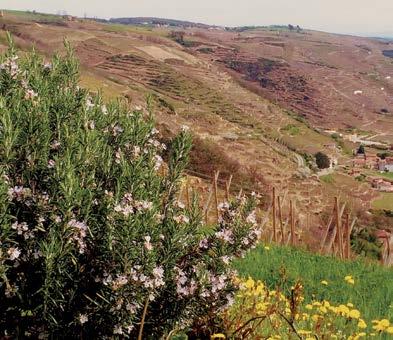

1660
Learn about the difference between Old World and New World Syrah in Vino Etcetera.

Moving northwards up the Rhône Valley into Syrah territory, 2018 was another hugely successful vintage for Luc Tardy. His 2018 Vieilles Vignes is an intense purple colour. Aromas of ripe black cherry compote, cooked fruits, a touch of marmite, sweet vanilla notes with coffee, chocolate and toast are all present and apparent. It is rich and concentrated on the palate with more blackberry fruit, black olive and treacle leading to a saline finish. This is a big and bold wine with lots of oak. It is full bodied with a vibrant acidity and should mature very nicely. Syrah grapes were harvested on September 17th, 2018, destemmed and fermented in concrete tanks using natural yeast for 21 days. The wine was transferred to old 600-litre barrels for the malolactic fermentation and matured a further 14 months in these. Tasted as a barrel sample, the wine will be bottled in December. Together with his wife Catherine, Luc cultivates 17 hectares of vines. All working of the soil is manual including ploughing, hoeing, covering the base of vines in winter with soil and uncovering in spring.
GILLES FLACHER, LES REINES, AOC SAINT-JOSEPH, 2018
49.00 $ 294.00

Gilles Flacher has eight hectares in seven distinct parcels in SaintJoseph and Condrieu. Each one is tended to, harvested and vinified separately. The slopes of Saint-Joseph are so steep that Gilles has no choice but to plough and hoe his vineyards manually. Syrah grapes for Les Reines come from twenty-year-old Syrah vines planted on granite soils. Gilles’s 2018 has aromas of toasty spice, black olive, incense, oregano with a meaty character. Tight and concentrated with a firm acidity, it is quite austere for the time being and will benefit from some cellaring. Some subtle floral lavender and plum flavours emerge. Tannic with a fine texture, it should metamorphose into a truly special wine. After picking, grapes were destemmed and underwent a cold maceration followed by fermentation and 23 days on skins. It was matured in barrel for 12 months with 30% new.

1661
Christophe Pichon possesses 18 hectares in the northern Rhône’s prestigious appellations Condrieu, Côte-Rôtie, SaintJoseph and Cornas. In recent years his two sons Corentin and Alexis have joined him in the family business. Having originally studied Viticulture and Oenology, Corentin spent six months in Australia’s Barossa Valley famed for its high-quality Syrah. He has brought back lots of new ideas to try for the family’s own Syrah. For his part, Alexis spent a year in Australia’s Tasmania and works on the commercial side.
CÔTE RÔTIE PROMESSE, AOC
CÔTE-RÔTIE, CHRISTOPHE PICHON PÈRE & FILS, 2017
Syrah, Viognier
$ 82.00 $ 492.00
The slopes of Côte-Rôtie are the steepest in the whole of the Rhône valley. Christophe has just over three hectares of old bush vines planted, or should that be clinging on, to schist soils. 2017 Côte-Rôtie, produced from 94% Syrah with 6% Viognier, has floral aromas combined with dark fruits, vanilla toast and cedar. It is a medium to full bodied wine which is structured with chewy tannins. Black cherry fruits emerge mid palate with nice weight and lead to a sour cherry and toasted spice finish. After an extended maceration on skins with regular pump overs and punching down of the cap, the wine was matured for 14 months in French oak barrels. Showing great potential for the cellar, it will not reach its optimum for drinking for some time yet.

Black and sour cherries, toasted spices
Grilled tuna with eggplant and peppers


MAISON CHRISTOPHE PICHON ALLÉGORIE, AOC CORNAS, 2017
An elegant wine brimming with fruit, aromas of black cherries, violets, cedar and toast precede delicious flavours of blackcurrants and blueberries. This is an expressive aromatic wine with some grippy tannins and toasty characters on the finish adding length. Syrah grapes were from a one-hectare plot planted on decomposed granite soils, on south east facing slopes at 400 metres with strong Mistral winds keeping fungal diseases at bay. Vinified in a similar way to the Pichon’s Côte-Rôtie, the Cornas is made 100% from Syrah grapes and was matured in older oak barrels for 14 months.
Three bottles each Syrah & Viognier
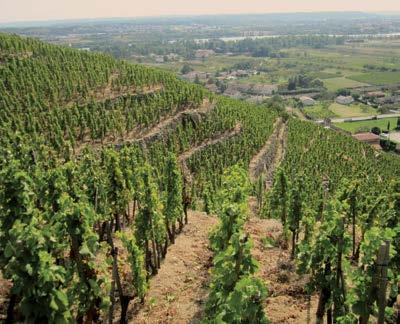
CONDRIEU, AOC CONDRIEU, CHRISTOPHE PICHON PÈRE & FILS, 2017
Condrieu, the original home of Viognier, is where the finest examples of it are still to be found. It is difficult to believe that only a few decades ago the grape variety had fallen out of favour and was gradually disappearing. The Pichons cultivate about 4.5 hectares in Condrieu. The vines are an average of 45 years old. These are planted on south facing slopes and terraces with just a thin covering of soil over granite. It is intensely perfumed with floral lily aromas, a fruit basket of apples, nectarines, peaches and orange blossom with a hint of lemon in the background. It is rich and smooth on the palate with honeyed peachy flavours followed by a bitter citrus pith finish. A good acidity keeps it fresh with great depth and warmth. Grapes were picked and gently pressed with a natural fermentation in barrel. It was matured for nine months, half in oak, half in tank.
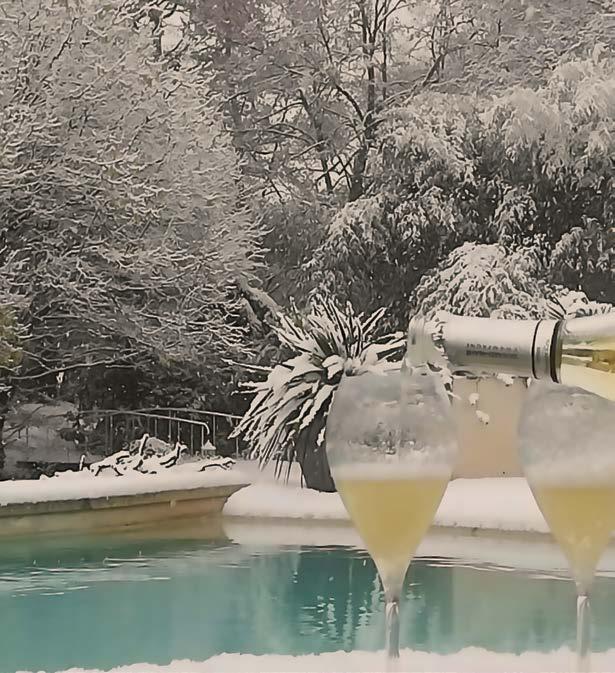
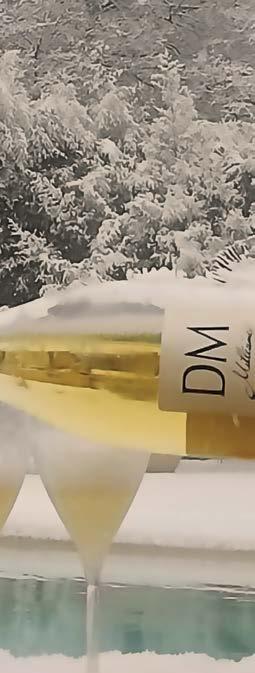
Carole Doyard and her father Philippe produce grower champagnes from the family’s six-hectare vineyard located close to the medieval town of Vertus at the southern end of the Côte des Blancs. Carole works alongside her father in the vineyards which are all classified Premier Cru with vines planted on white calcareous soils containing fossils. Carole takes care of winemaking and produces refined and elegant champagnes. The range is based on the Chardonnay grape – the specialty of the Côte des Blancs.
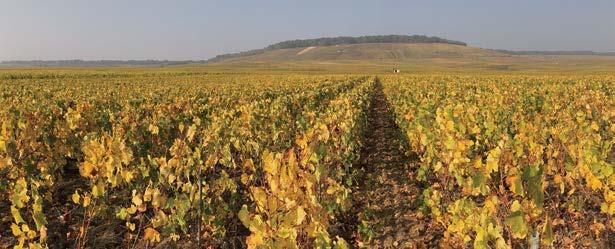
DM EMPREINTE, DOYARD-MAHÉ CHAMPAGNE, CHARDONNAY BLANC DE BLANCS, VERTUS PREMIER CRU
Chardonnay
1663 $ 60.00
360.00 1664

This grower Champagne is pale in colour with aromas of ripe stone fruits, nectarines, some mango and a touch of lime, all elegantly combined. Its fine creamy mousse reveals limey custard flavours with a long crisp mineral finish. This cuvée, based on the 2017 vintage with 40% of older reserve wines, was bottled in 2018 for the second fermentation in bottle.
2020-2022,
Nectarines, mango, lime 6°C
Fine creamy mousse, lime custard, [02]
on the half shell with mignon-ette
1665
EB CUVÉE DÉSIR, EXTRA BRUT, DOYARD-MAHÉ CHAMPAGNE, CHARDONNAY BLANC DE BLANCS, VERTUS PREMIER CRU
Chardonnay
$ 71.00 $ 426.00
The trend for extra dry Champagnes continues. In some ways, sugar can hide or cover a multitude of sins, so in order to produce a top Extra Brut, only the best Chardonnay grapes can be used. Cuvée Desir has aromas reminiscent of spring meadows and fresh hay, combined with stone fruits and a savoury edge. On the palate a complex blend of honeysuckle passionfruit, lemon and grapefruit are all present. Based on the 2015 vintage with 30% older base wines, it was bottled in early 2016. This extended yeast autolysis adds complexity and depth while remaining fresh as a daisy. Mango and grapefruit pith flavours continue to persist on the palate.
passionfruit, grapefruit, [01]


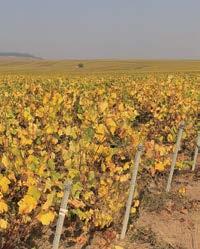
This holiday season, indulge yourself and buy some Champagne.
1666
DM ROSÉ, DOYARD-MAHÉ CHAMPAGNE, VERTUS PREMIER CR
Chardonnay, Pinot Noir
$ 68.00 $ 408.00

A deep pink colour due to the presence of 12% Pinot Noir, DoyardMahé’s Rosé has aromas of strawberry creamsicle, rosehip and raspberries. Red fruit flavours continue onto the palate, combined with a herbal and vinous twist adding depth. The Pinot Noir element underwent first fermentation in oak, adding a savoury edge.
2020-2022, M8 D9
Strawberry creamsicle, rosehip, raspberry 5°C
Savoury vinous fruits, [02]
Strawberry macaroons

1667
EB 2014, EXTRA BRUT, DOYARDMAHÉ CHAMPAGNE, 100% CHARDONNAY
Chardonnay
$ 101.00 $ 606.00

A great vintage Champagne with developed bready aromas complementing mellow lemon and quince fruits. It is fine in texture with a pronounced acidity and fresh citrus flavours. Perfectly balanced, it leaves you wanting another sip. The 2014 vintage was saved by a warm dry September, allowing the production of Champagnes with good ripeness.
Bready aromas, quince 5°C
Lively citrus, [01]
Persimmon panna cotta
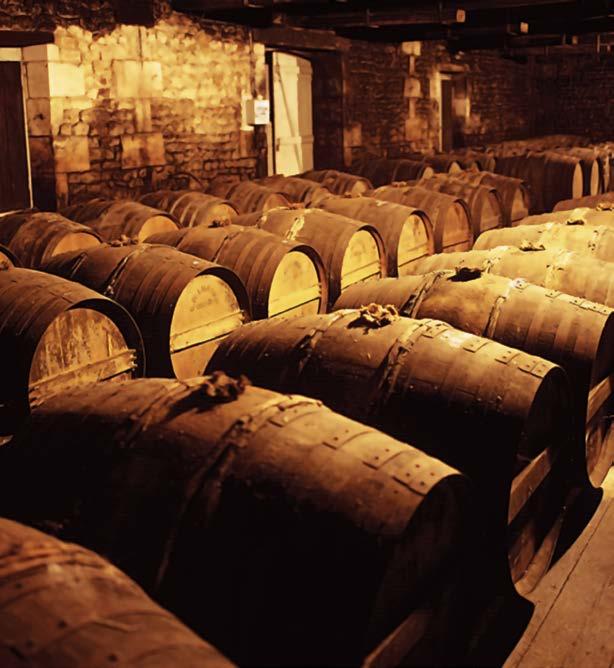
1669 ELISABETH FINE COGNAC CASE
Colombard, Ugni Blanc
$ 149.00 $ 447.00
Cognac is generally classified according to the length of time it spends in Limousin oak barrels. As it matures in oak, evaporation occurs making the Cognac more concentrated in flavour, deeper in colour and smoother on the palate. Elisabeth Cognac, owned by the Arrivé family, is based in Fins Bois, one of the five sub regions of Cognac.
One bottle each VS, VSOP, XO
Cognac brandy is produced in the Charente and CharenteMaritime departments in southwest France. Named after the town of Cognac, vineyards are planted mainly with Ugni Blanc, Folle Blanche and Colombard. After fermentation of the base wines, these must be double distilled in swan necked copper alembic stills and aged in Limousin oak casks for a minimum of two years to receive the Cognac appellation.

ELISABETH VS FINE COGNAC, AOC COGNAC FINS BOIS
VS or Very Special, made from Colombard and Ugni Blanc, was aged for three years. Pale in colour, it has nice fruity aromas. Quite light on the palate, it is soft with more smoky notes emerging.

ELISABETH VSOP FINE COGNAC, AOC COGNAC FINS BOIS
After six years in Limousin oak barrels, the Very Special Old Pale or VSOP takes on a slightly deeper golden colour. The aromas are complemented with honeysuckle and almond notes with more woody oaky flavours.

ELISABETH XO FINE COGNAC, AOC COGNAC FINS BOIS
XO or Extra Old was matured for over ten years. It is amber in colour with a mahogany hue. Woody spice and smoke aromas lie over a fruit background. The palate is smoother with lots of vanilla, chocolate and caramel flavours.
Blanche, Montils,
$ 362.00 $ 1,448.00

Folle Blanche
$ 171.00
513.00
Situated in the Bas-Armagnac, Domaine de Sauvis produces Armagnacs from grapes farmed biodynamically and Demeter certified. Vineyards are planted 55% with Folle Blanche, 35% with Baco A and 10% Colombard. After a single distillation, the spirit is matured in 400-litre new oak casks initially, followed by older barrels.
Two bottles each Saphir Jaune, Sauvis Ambre Royale & Sauvis Topaze Impériale
Château Bellevue is a single estate at Virollet that grows its grapes, ferments and distils its own wine and ages its own Cognacs. Most growers in the Cognac region supply grapes or base wine to the larger Cognac houses for distillation. The 108-hectare estate lies around the 18th century château, bordered by six kilometres of stone walls. The old Reserve No 1 was matured for over 50 years in Château Bellevue’s underground barrel cellar. Amber in colour, it has mellow caramel and orange fruit aromas with vanilla, toffee and oak. This complex and incredibly smooth Cognac was produced from Folle Blanche, Montils and Colombard grapes, all organically grown on the estate.
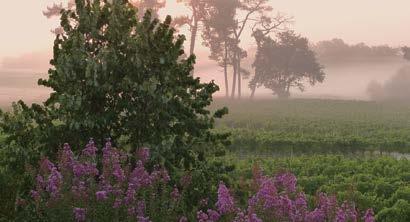



SAPHIR JAUNE, BAS-ARMAGNAC, AOC ARMAGNAC, VSOP, DOMAINE DE SAOUBIS, 2011
Golden yellow in colour, the Saphir Jaune has earthy caramel aromas. Soft and fruity initially, it is elegant with more smoky notes emerging and a long finish. It is made of 100% Folle Blanche matured for six years.
SAUVIS AMBRE ROYALE, BASARMAGNAC, AOC ARMAGNAC, X.O., 2007
Deeper golden colour, the Ambre Royale has pungent earthy aromas. Aged for more than ten years, it is smooth with orange and candied fruit flavours complemented by woody notes.
Similar in colour to the Ambre, Topaze Impériale has chocolate and cocoa notes leading to a fruity attack on the palate, smooth with a firm finish. SAUVIS, TOPAZE IMPÉRIALE, BAS-ARMAGNAC, AOC ARMAGNAC, HORS D’AGE, 2005
DE SAINT-LOUP CALVADOS, SÉLECTION, AOC CALVADOS
$ 70.00 $ 210.00
A soft smooth Calvados with nice appley aromas, cooked apples, cidery with some floral notes and a long finish. Produced from the Domfront region, renowned for its fruitiness and appeal for early drinking.


G. ROZELIEURES, SINGLE MALT WHISKY, ORIGINE COLLECTION
Golden yellow with fruity aromas, honey and hint of smoke and earth. Quite light on the palate with a lingering smoky finish, it was matured in sherry oak casks.
G. ROZELIEURES, SINGLE MALT WHISKY, RARE COLLECTION
G. ROZELIEURES, SINGLE MALT WHISKY, FUMÉ COLLECTION
Golden yellow, smoky but not overly so, it is quite fiery with earth and chocolate flavours.
Deeper in colour, the Rare Collection has mellow aromas with dried raisins and fruits. This is smooth and rich with caramel and chocolate flavours. It was matured in a combination of casks from Sherry, Cognac and Sauternes.
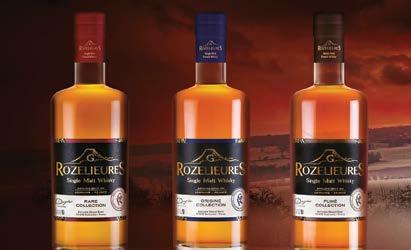
One bottle each Origine, Rare & Fumé
The Grallet-Dupic family have been distilling at Rozelieures in Lorraine for more than 150 years to produce plum brandy. They are the first distillery in France to produce peated malts. The family grow their own barley and distill the spirit a few hundred yards from the fields. Their whiskies are double distilled, then aged in casks made from oak from local forests, as well as casks from Kentucky, Sherry, Burgundy and south-west France.
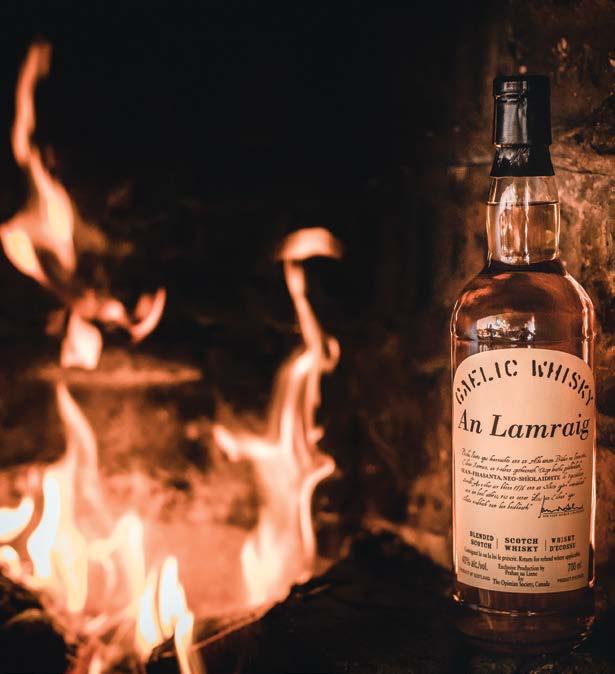

Based on the Isle of Skye, Pràban na Linne promotes traditional Gaelic whiskies and culture. Whiskies are sourced from Islay known for its peaty characters and Speyside. The Master blender blends malts to produce sweetly peaty flavours.
Learn about the woman behind the Pràban na Linne whiskies in Vino Etcetera. 1673

An Lamraig is a blended scotch. Golden in colour it has a savoury aroma with citrus notes. On the palate it is soft and sweet with a long smoky finish.

Matured for 12 years, it has taken on a deep colour and flinty smoky notes. A smooth malt with orange and vanilla flavours with a long earthy fruit finish.

Amber in colour, it has mellow oaky vanilla notes with a touch of smoke. It is rich and nutty with a smooth palate and lingering smoky flavours.
WITH 1 SIMPLE SUBSCRIPTION automatically receive 9 surprise cases of Opimian wines per year selected by Jane Masters MW, Opimian’s Master of Wine. Each case is carefully prepared by an independent winemaker from a different region.
